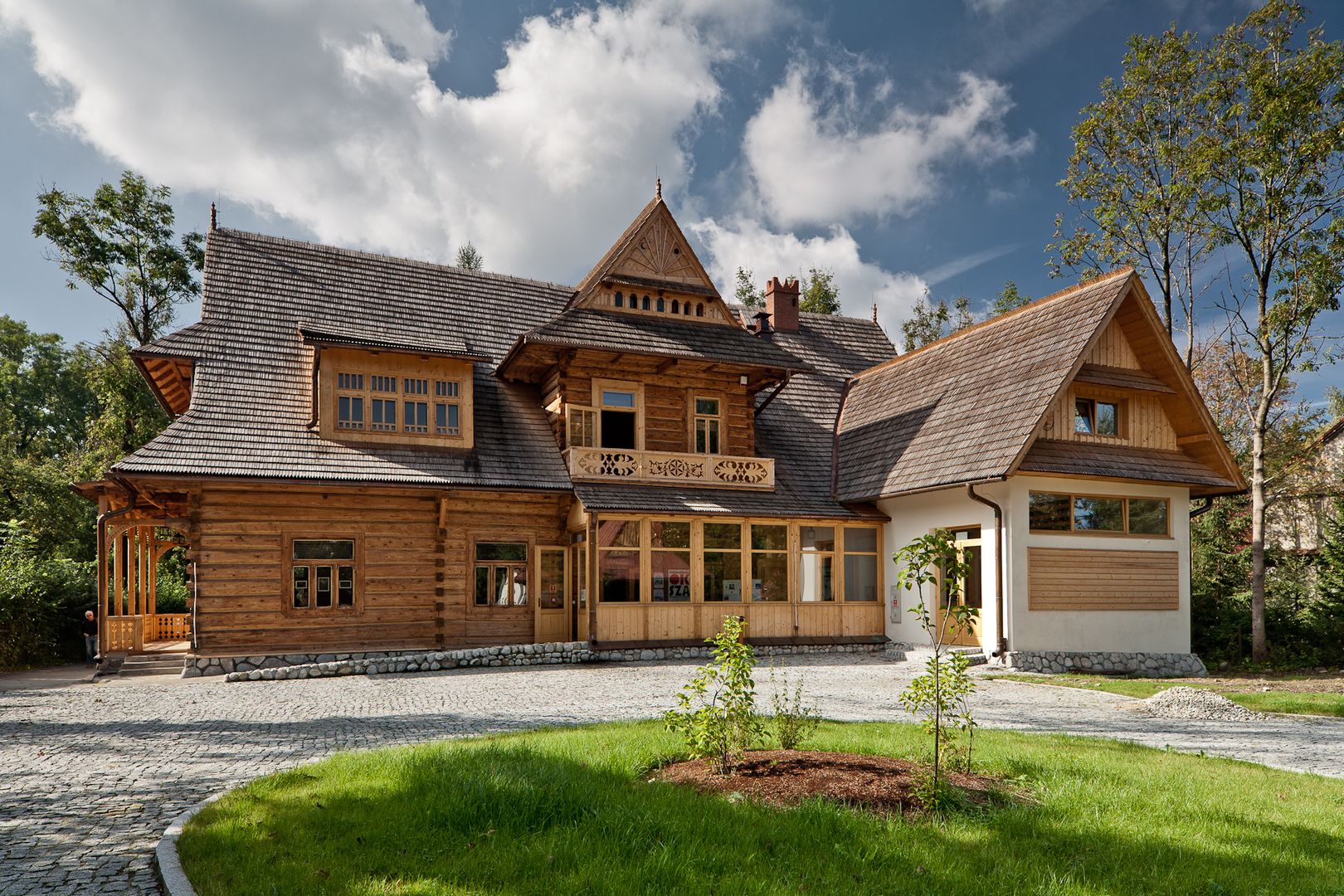Villa "Oksza"
6.88

Overview
The "Oksza" Villa in Zakopane, designed by Stanisław Witkiewicz between 1894 and 1895, is an outstanding example of the Zakopane Style of architecture. Built in 1896, it was initially named "Korwinówka" after its first owners, Bronisława and Wincenty Korwin-Kossakowski. In 1899, the villa was purchased by Count Marcin Nałęcz-Kęszycki, which led to a change in its name. The building is distinguished by its characteristic steeply pitched roof and rich wooden ornamentation inspired by folk art and Tatra motifs. Witkiewicz, as the creator of the Zakopane Style, aimed to design a structure that would harmoniously blend traditional construction with modern needs for comfort and aesthetics. In 1920, the villa became the headquarters of the "Odrodzenie" (Revival) Society, which carried out a significant reconstruction, altering the building's original appearance. During World War II, it served as a Home Economics School, and from 1945 to 1965, it housed a tuberculosis preventorium. In the 1960s, a major renovation was carried out, and since 2006, the building has been owned by the Tatra Museum, which registered it as a historical monument. In 2011, the villa was opened to the public, featuring exhibitions such as "Zakopane – The Navel of the World" and "Art Under Giewont, 1880–1939." In 2015, the building received an award in the "Well-Maintained Monument" competition for comprehensive conservation work, highlighting its importance on Poland's cultural map. Oksza not only represents a key element of the region's architectural heritage but also engages the local community and tourists in exploring Tatra culture.
Location
Tickets
Powered by GetYourGuide
2025 Wizytor | All Rights Reserved